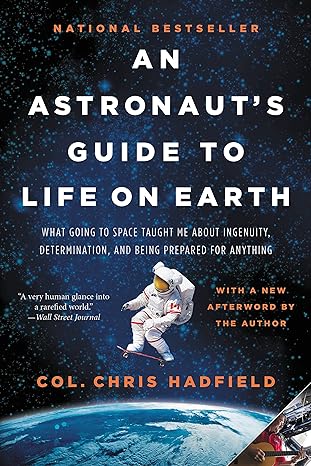Main Topic or Theme
The main topic of “An Astronaut’s Guide to Life on Earth” revolves around Chris Hadfield’s experiences as an astronaut and the valuable life lessons he learned during his journey.
Key Ideas or Arguments Presented
- Preparation and Adaptability: Hadfield emphasizes the importance of meticulous preparation and adaptability in achieving success, drawing parallels between life on Earth and in space.
- Teamwork: The significance of effective teamwork and communication is highlighted, as astronauts work collaboratively to accomplish complex missions.
- Mindset: Hadfield advocates for a positive mindset, focusing on what can be controlled and embracing challenges with resilience and determination.
- Continuous Learning: Astronauts engage in lifelong learning, constantly striving to improve skills and knowledge to face unforeseen circumstances confidently.
Chapter Titles or Main Sections with Paragraph on Each
- Dream the Impossible: Hadfield shares his childhood dream of becoming an astronaut and the journey that led him to achieve it, emphasizing the importance of setting ambitious goals.
- The Power of Negative Thinking: Contrary to conventional wisdom, Hadfield argues that embracing the worst-case scenario mentality helps in anticipating and mitigating risks effectively.
- The Last People in the World: Astronauts undergo extensive training to prepare for worst-case scenarios, cultivating a mindset of resilience and resourcefulness.
- Square Astronaut, Round Hole: Hadfield reflects on his experiences adapting to the bureaucratic and political aspects of space missions, emphasizing the need for flexibility and diplomacy.
- The Power of Personality: Personality dynamics play a crucial role in crew selection and mission success, underscoring the importance of effective communication and conflict resolution.
- Sweat the Small Stuff: Attention to detail is paramount in space missions, as minor errors can have significant consequences, highlighting the importance of thorough preparation.
- The Value of Zero: Hadfield discusses the concept of “aiming to be a zero” – being competent and reliable without seeking recognition or glory, fostering a culture of humility and mutual respect.
- **The Inside of the Sim: **Simulations play a crucial role in astronaut training, providing opportunities to practice problem-solving and decision-making in high-pressure environments.
- Aim to Be a Zero: Hadfield emphasizes the importance of humility and continuous improvement, encouraging readers to focus on being reliable team players rather than seeking personal glory.
- Sweat the Small Stuff and the Big Stuff Will Take Care of Itself: Attention to detail and meticulous preparation lay the foundation for successful outcomes, allowing astronauts to navigate unforeseen challenges confidently.
Key Takeaways
- Preparation, adaptability, and teamwork are essential for success in both space missions and life on Earth.
- Maintaining a positive mindset and embracing challenges with resilience are key to overcoming obstacles.
- Continuous learning and attention to detail are fundamental principles for achieving excellence.
Author’s Background and Qualifications
Chris Hadfield is a retired Canadian astronaut who served as the commander of the International Space Station (ISS). He has over 20 years of experience as an astronaut and has conducted three space missions, earning widespread recognition for his contributions to space exploration and science communication.
Comparison to Other Books
“An Astronaut’s Guide to Life on Earth” stands out for its unique blend of personal anecdotes from space missions and practical advice for everyday life, distinguishing it from other memoirs or self-help books by astronauts.
Target Audience
This book is suitable for readers interested in space exploration, personal development, and leadership, offering valuable insights from the perspective of an astronaut.
Reception or Critical Response
“An Astronaut’s Guide to Life on Earth” has received positive reviews for its engaging narrative, practical wisdom, and inspirational storytelling, resonating with readers of all backgrounds.
Publisher and First Published Date
Publisher: Little, Brown and Company First Published: October 29, 2013
Recommendations
Other similar books on the same topic include:
- “Endurance” by Scott Kelly
- “The Right Stuff” by Tom Wolfe
Biggest Takeaway
Success in life, like in space missions, requires meticulous preparation, adaptability, teamwork, and a resilient, positive mindset.



